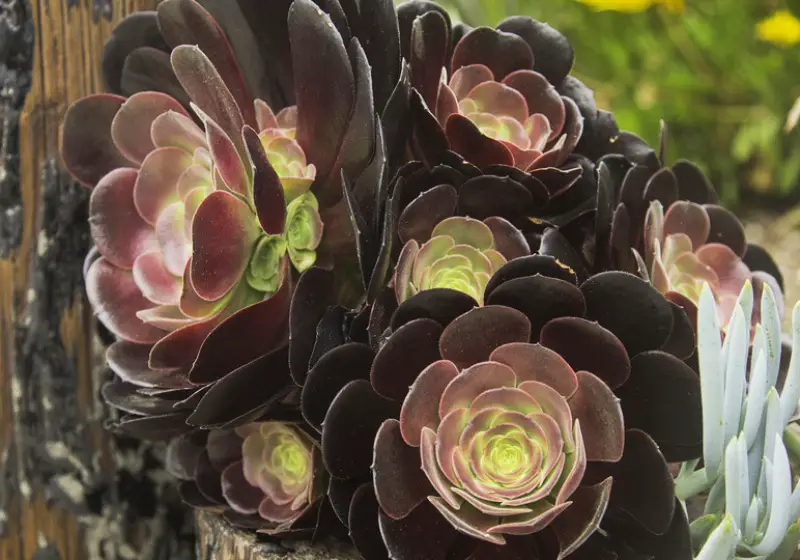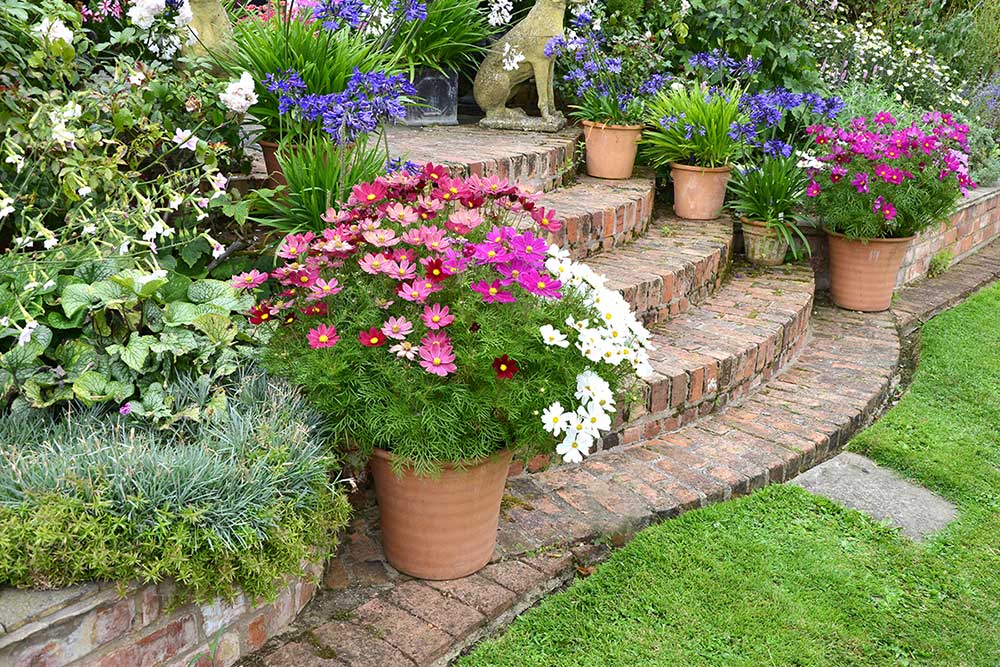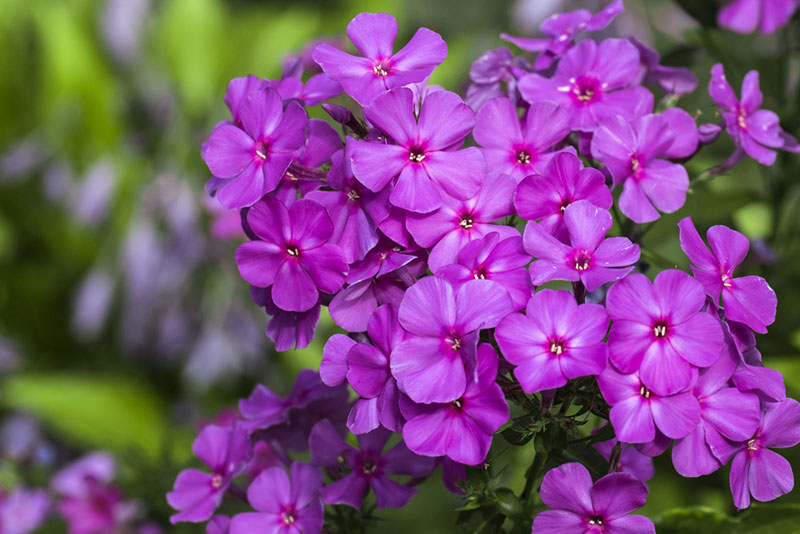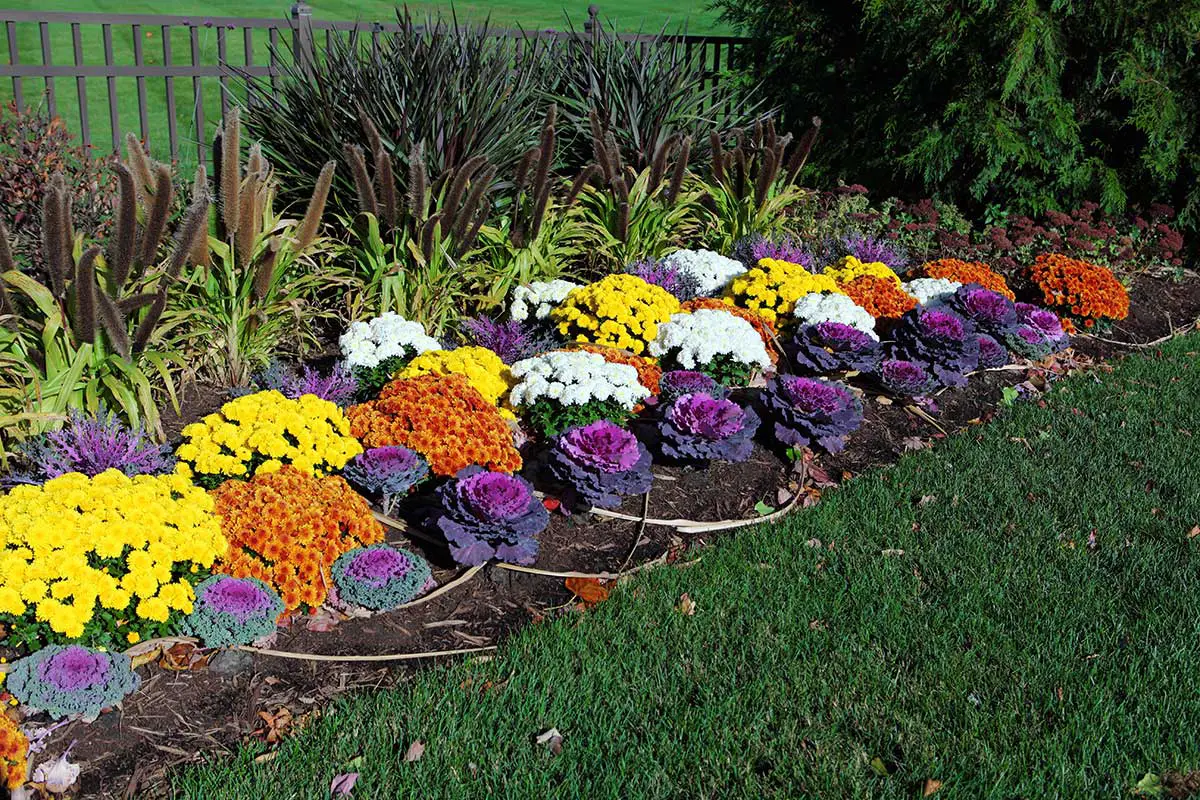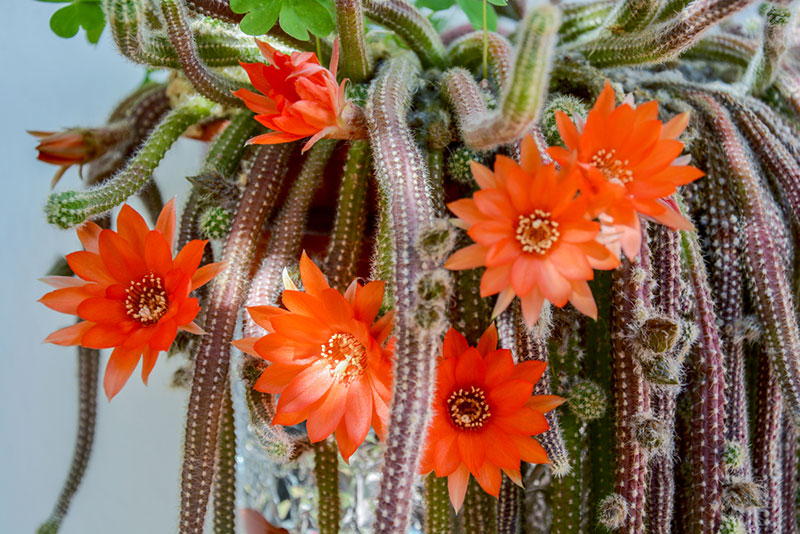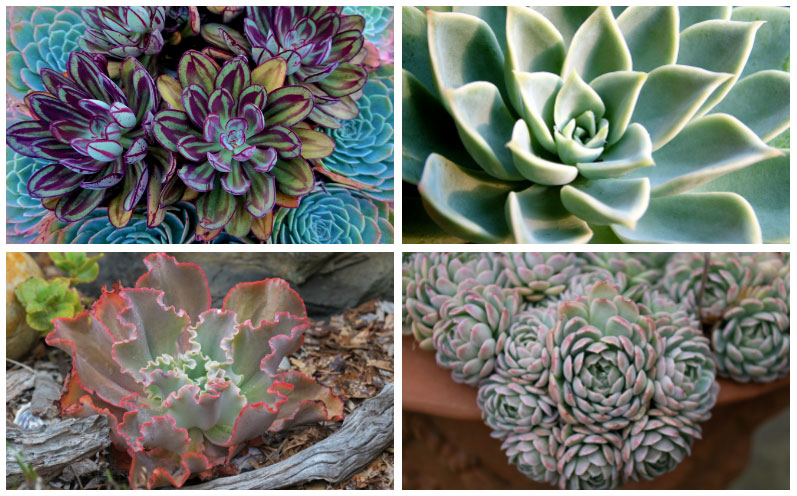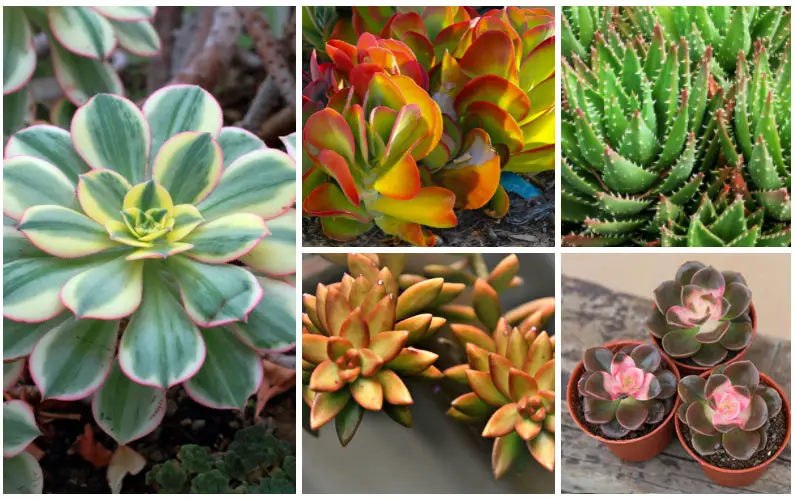
I love growing succulents in my garden because they take minimal effort to maintain. However, I have found that a lot of the succulent that I have planted are very similar in color. To help make my garden more colorful, I began looking into colorful succulents that could give my space a much more stunning look.
Let’s take a look at some of the plants that I found.
1. Sticks on Fire Succulent
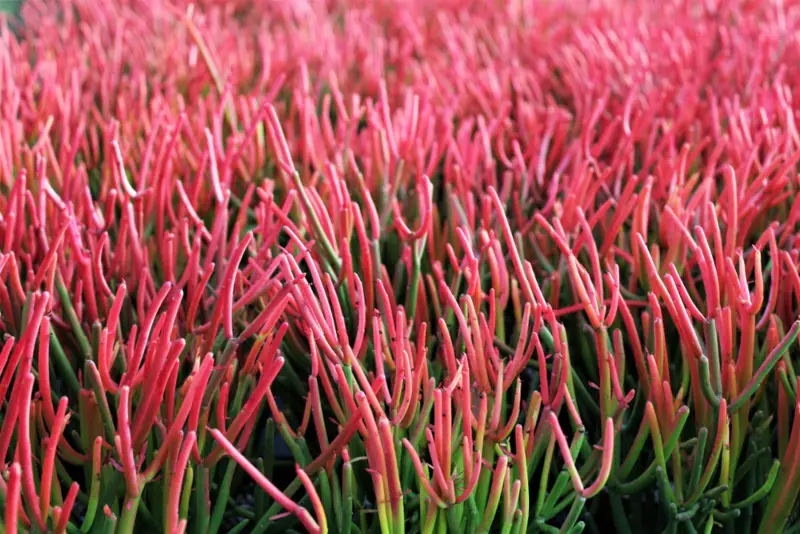
This is a succulent bush that has thin stems that are yellow in the summer and red in the winter. These plants can grow to be eight feet tall. For the best growing conditions, the plant will need full sun and soil that is well-drained. The plant is toxic, so it will irritate your skin.
2. California Sunset
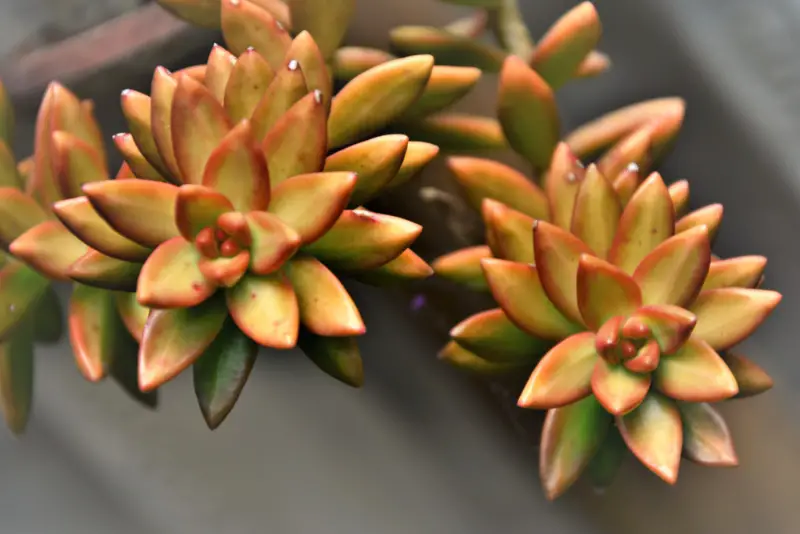
This succulent is green, but the edges will create a soft pastel pink color that looks like the hues of a sunset. Ideally, this plant will do best with morning sunlight and rocky, sandy soil. It creates small white flowers in the spring.
3. Santa Rita Prickly Pear
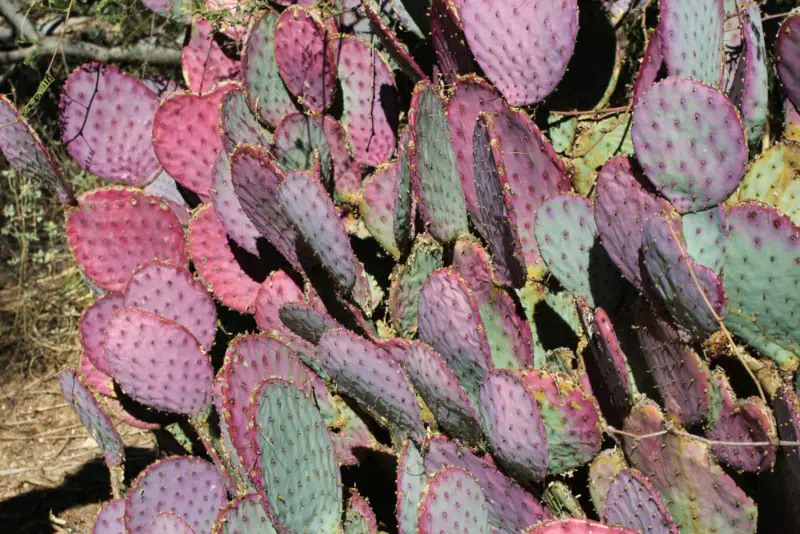
This is a bushy succulent that has bluish, green pads in warmer temperatures, but before winter arrives, they will turn deep purple. The color actually will intensify when the plant gets direct sunlight and very little water. This plant can grow to be eight feet tall.
4. Echeveria agavoides
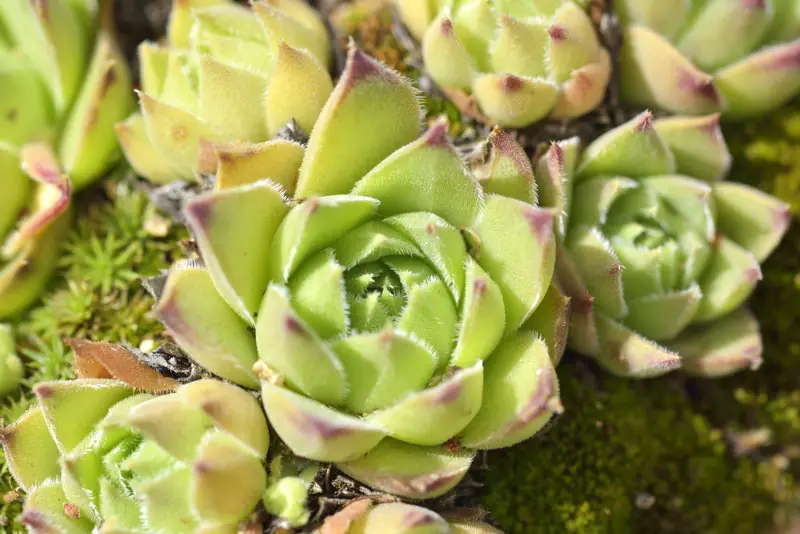
The red ‘lipstick’ edges on this plant are perfect for adding color to any succulent garden. It can grow in full or partial sun, but it is a plant that is dormant during the winter month because it does not do well in the cold.
5. Crassula rupestris (baby’s necklace)
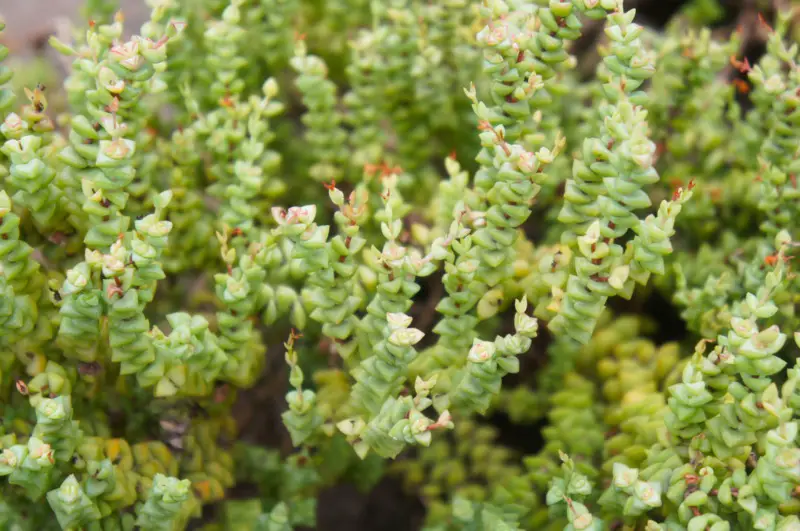
The small pointy leaves of this plant spiral around the stem and have crimson edges that look spectacular. It can grow to be one-foot tall, and in full sun, the color of the leaves will intensify. Ideally, they need four to six hours of sunlight a day.
6. Golden-toothed aloe
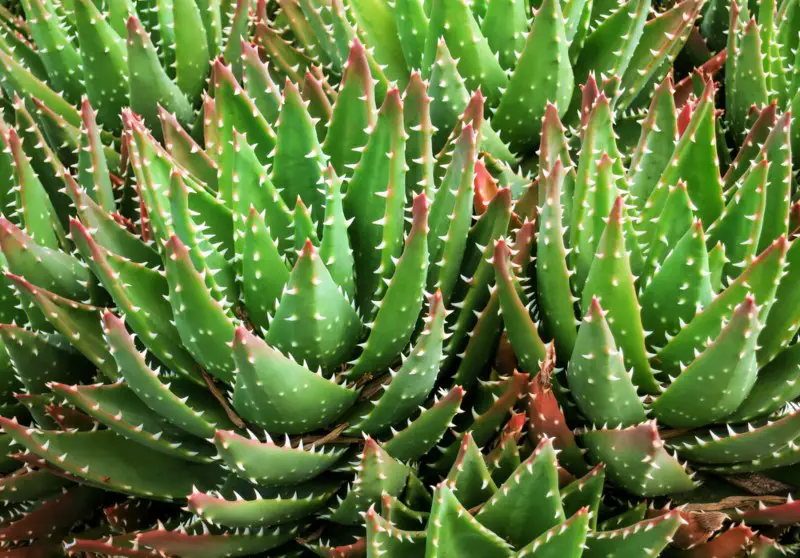
This plant has yellow teeth that almost look like they glow in the right light. The leaves will turn orange in full sun, and it also produces orange flowers. It grows best in sandy soil, and it will attract bees and birds to your garden.
7. Sempervivum tectorum ‘Royanum’ (Royanum hens-and-chicks)
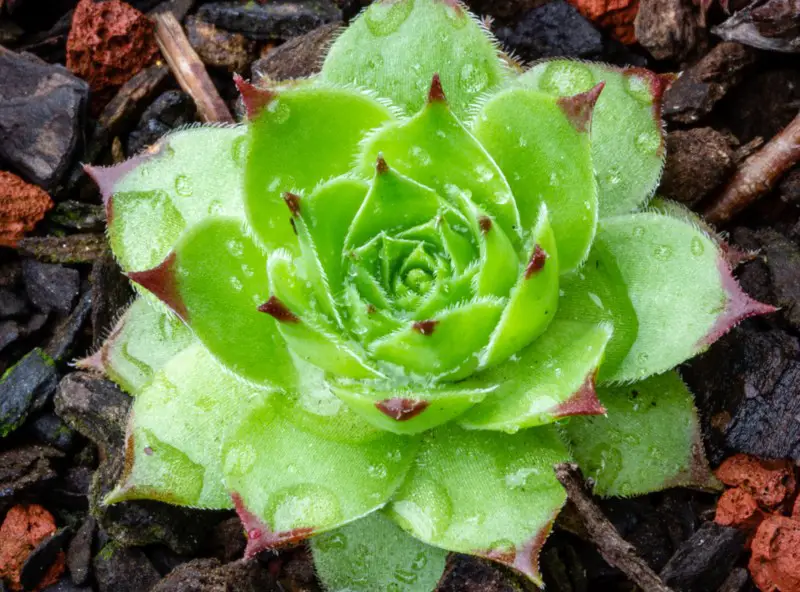
These are plants that look a lot like small roses, but they are succulents that have light green leaves with a red tip. They do not require a lot of water, and they do well in sandy or clay-based soil.
8. “Paddle Plant” Desert Cabbage (Kalanchoe Luciae)
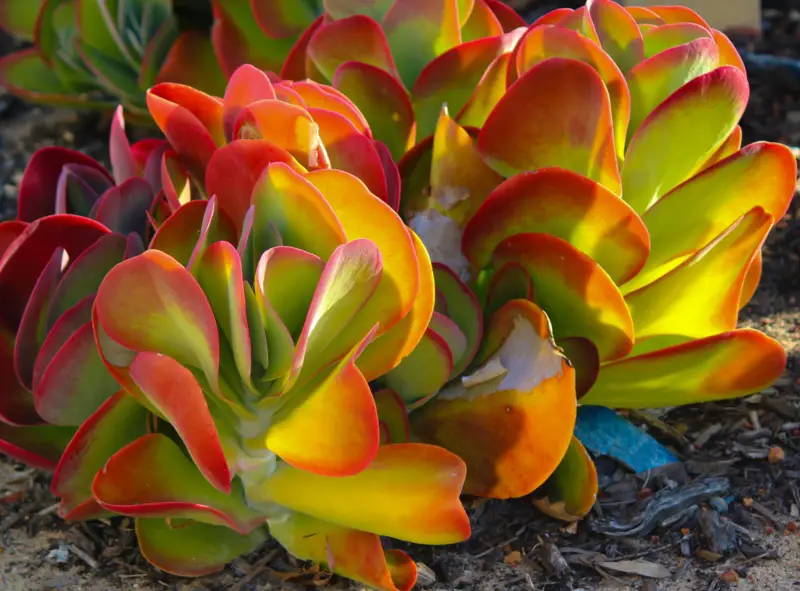
This plant, as the name suggests, has large paddle-like leaves that typically get a red outer edge during the winter. It grows in hardiness zones 10 and above in well-draining soil, bright sunlight, and temperatures that are above 60 degrees Fahrenheit.
9. Crassula ovata ‘Hummel’s Sunset’ (Sunset Jade)
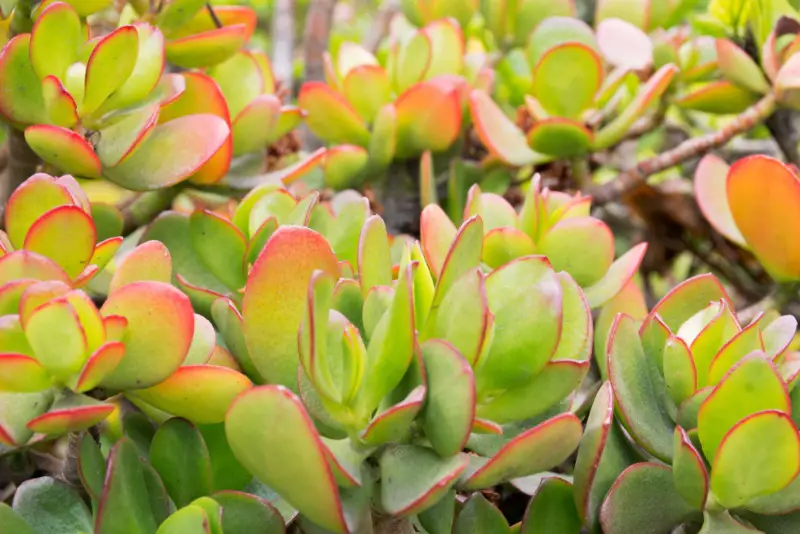
This is a plant that grows in zones nine and above. It is about the size of a bonsai, and the tips of the leaves turn yellow to yellowish-red in the sun. It will grow best in filtered sunlight and well-drained soil.
10. Senecio serpens (Blue Chalksticks)
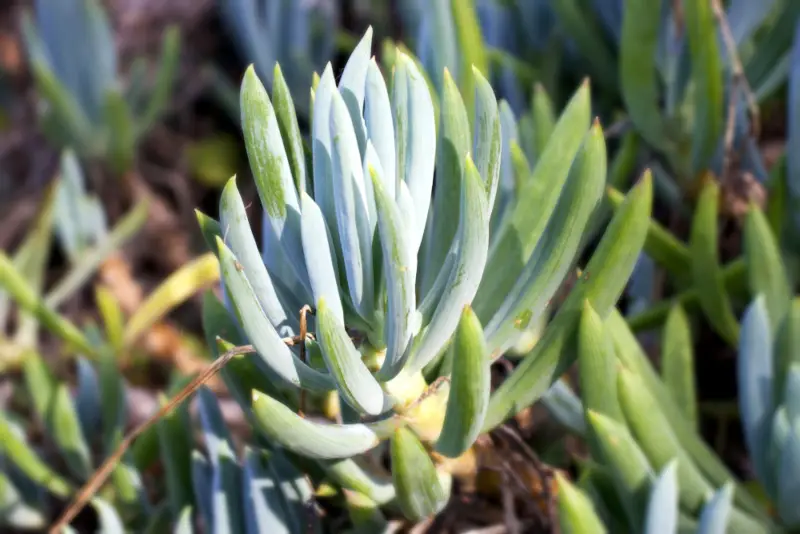
This blue leafed succulent will make great edging in your garden. It can grow between 12 and 18 inches, and it grows in well-draining soil like sand. The plant does best in sunny conditions, but it can handle some shade as well.
11. Dragon’s Blood Succulent
If you are looking for a ground cover for your garden, then this is a great option to consider. It’s fast-growing, and the green leaves will turn to shades of red during the summer months. This plant does not require a lot of water, but it does prefer to grow with a lot of sunlight.
12. Sedum nussbaumerianum (Coppertone Stonecrop)
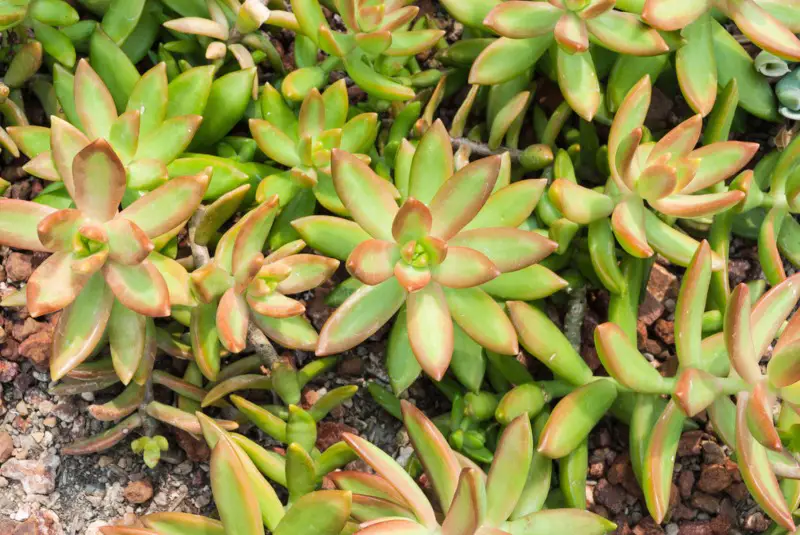
The rosettes of this plant change colors with the amount of sun that it gets. In partial shade, the plant will be yellow-green, but with full sun, the leaves will be a copper-red color or rose gold. It also does best in well-drained soil.
13. Black Beauty ‘Aeonium’
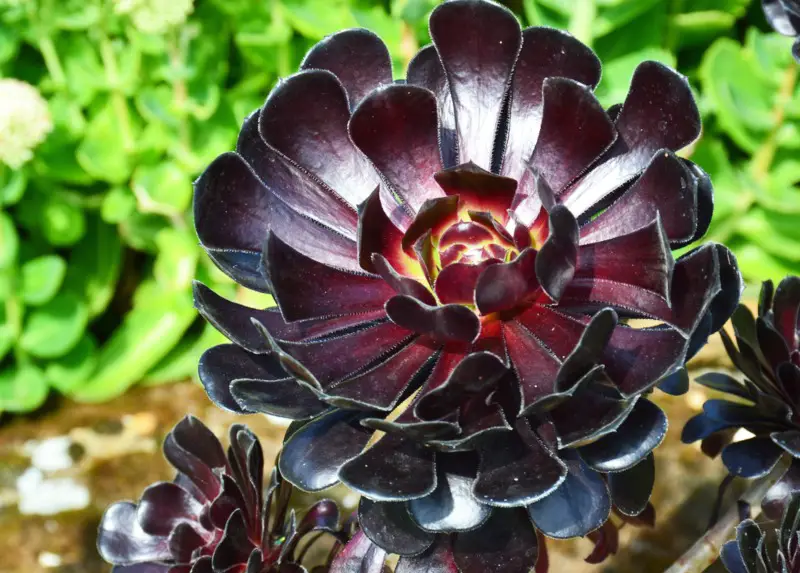
This is a unique looking succulent that has dark burgundy leaves that are nearly black in color when grown in full sun. In sandy soil, they can grow to be four feet tall. Limit water in the winter because this plant will go dormant.
14. California Coast – Black Knight
This dark-looking succulent can add a lot of depth to your garden. It will grow in full sun, but the afternoon sun during the hot summer can be too much for the plant. It will thrive in any type of soil and does not need to be watered often.
15. Chroma (echeveria chroma)
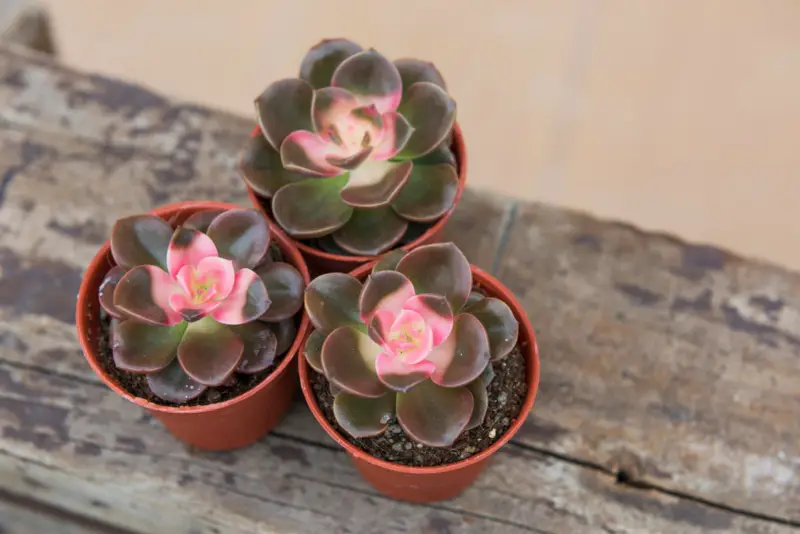
This small plant will grow to be about three inches tall. The leaves can be rose red, pink, gold, or apricot, which can combine to create the colors of a sunset. It will grow in full sun and any type of well-drained soil. In addition, it will not require a lot of water.
16. Senecio haworthii (Wooly Senecio)
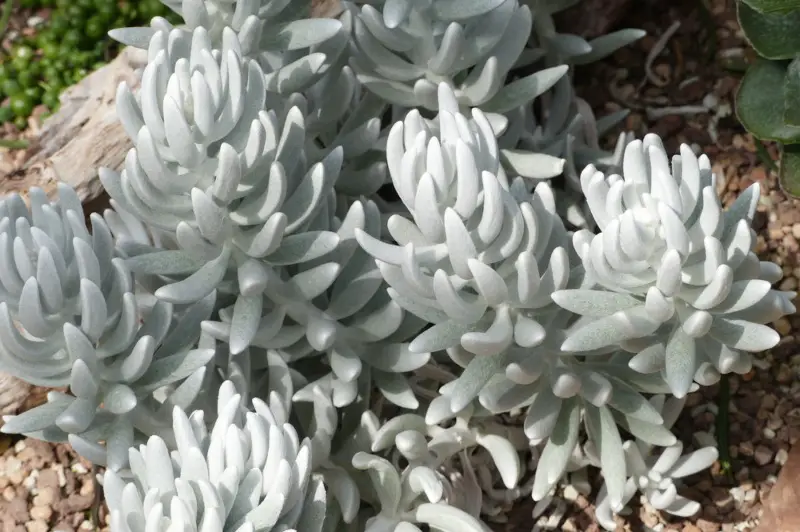
This succulent shrub has white hairs covering the leaves, which will make it look unique in any garden. It will grow in well-drained soil, with little water, and in full sun or partial shade. This is a plant that is toxic to animals.
17. Graptosedum ‘Bronze’
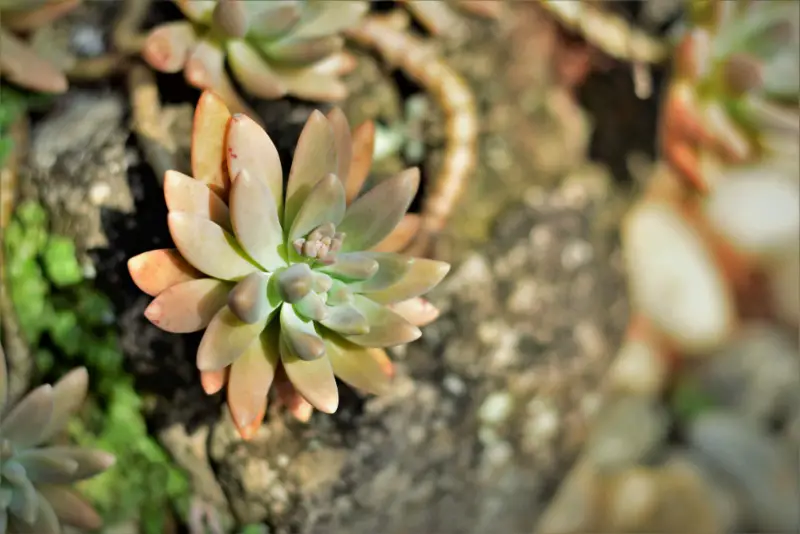
Typically only growing about six inches, this reddish, bronze plant will look great in any garden. It will require porous soil that has good drainage, little water, and full sun. The buds of this plant will be pink before they bloom, but after, they will be a bright yellow.
18. Moon Cactus
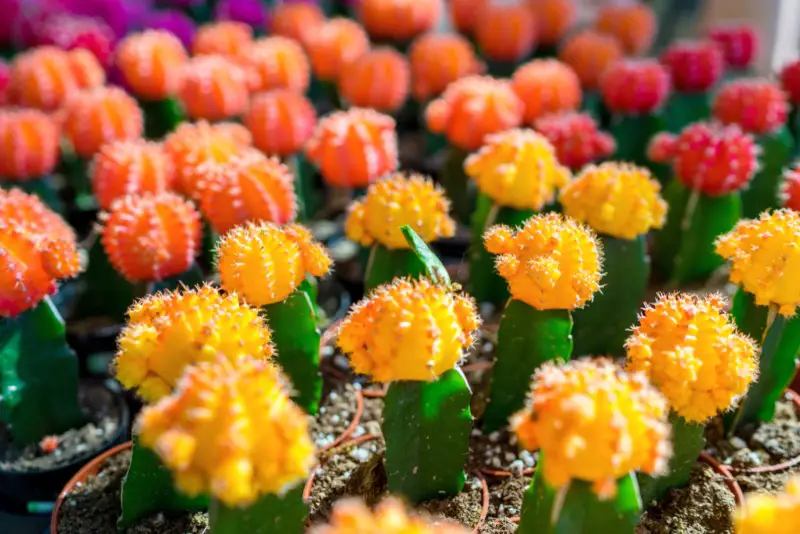
This is a bright plant where the top is orange, pink, or yellow in color, and the base of the plant is green. They prefer to grow in indirect sunlight and temperatures that remain above 40 degrees Fahrenheit. This plant will only need minimal water and well-draining soil. For more information on Moon Cactus, see our growing guide here.
19. Lithops (Living Stones)
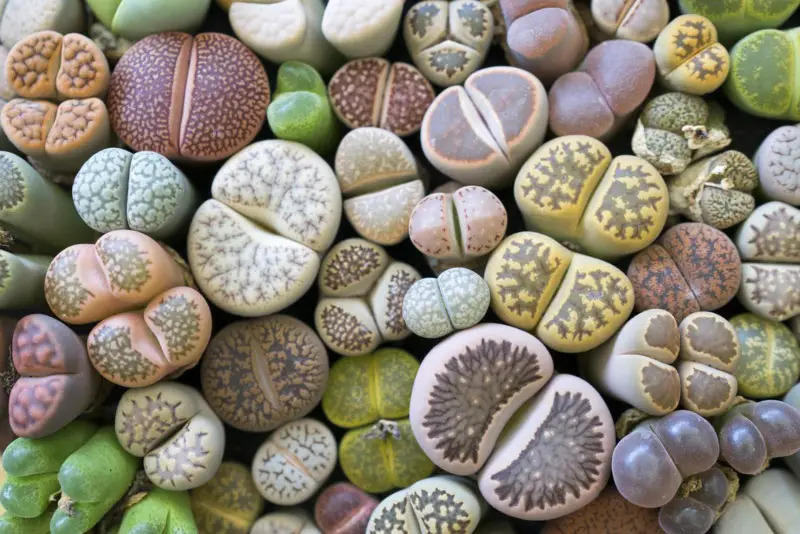
This is a plant that does not need a lot of care, so it can grow with very little water, poor soil, and in the shade or sun. It likes the heat and can handle temperatures up to 100 degrees, but it’s not tolerant of temperatures below 50.
20. Queen Victoria Agave
It can be seen up to one-foot in height and two feet in diameter. The rosette is green, but it will have a very distinct white pattern on the leaves. It is a plant that can easily be forgotten about, especially since it will grow in any soil and with little water.
21. Bryophyllum Fedtschenkoi (Lavender Scallops)
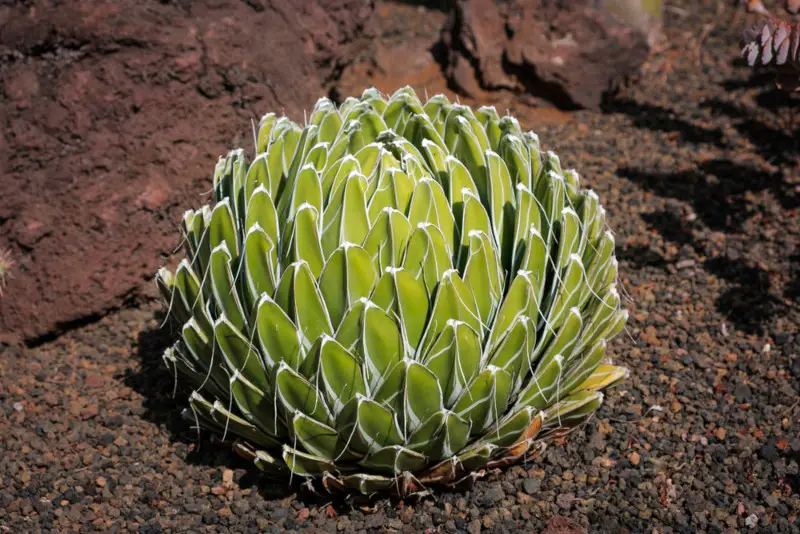
This is a succulent that can grow to be two feet tall. The leaves are green, but the blooms will be purple or red. These plants will grow well in any type of light, but a southern light source could burn the leaves. The temperature needs to be above 55 degrees Fahrenheit.
22. Aeonium ‘Sunburst’
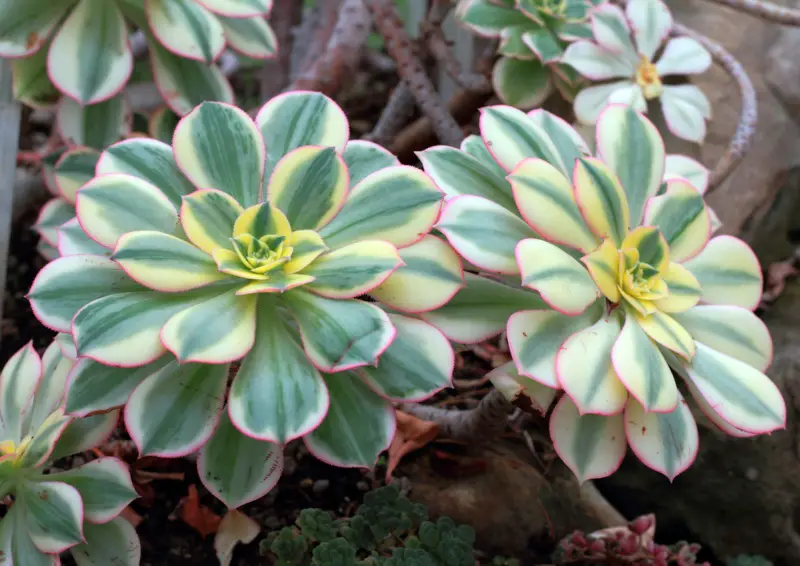
The edges of the leaves on this succulent are yellow, which will create a sunburst effect when you look at it. The tips can even turn red with enough sunlight. Sandy soil and full sun will help the plant grow at its best.
23. Tradescantia pallida ‘Purpurea’
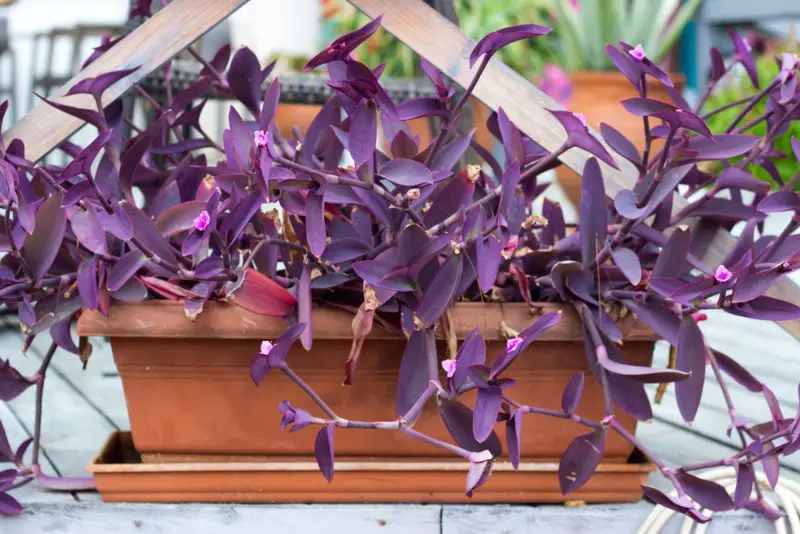
The purpurea is a plant that has leaves that are deep purple to violet. It grows well in rich soil that is well-draining, and it can grow in full sun or partial shade. The plant is drought-tolerant, and it requires very little to maintain.
24. Zebra Plant (Haworthiopsis attenuata)
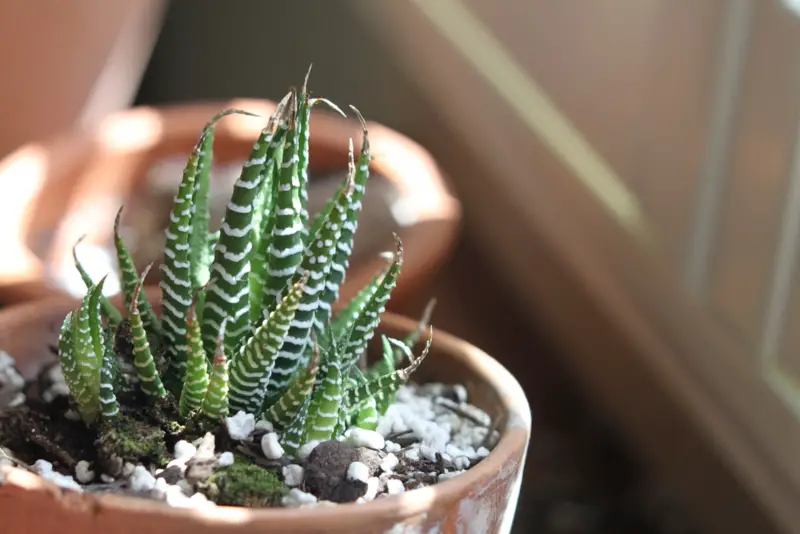
This is a cluster succulent that is green with white stripes on the leaves. It is a plant that requires a lot of sunlight and water during the growing season. They also need well-draining soil so that the air can get to the roots.
25. Crassula capitella ‘Campfire’
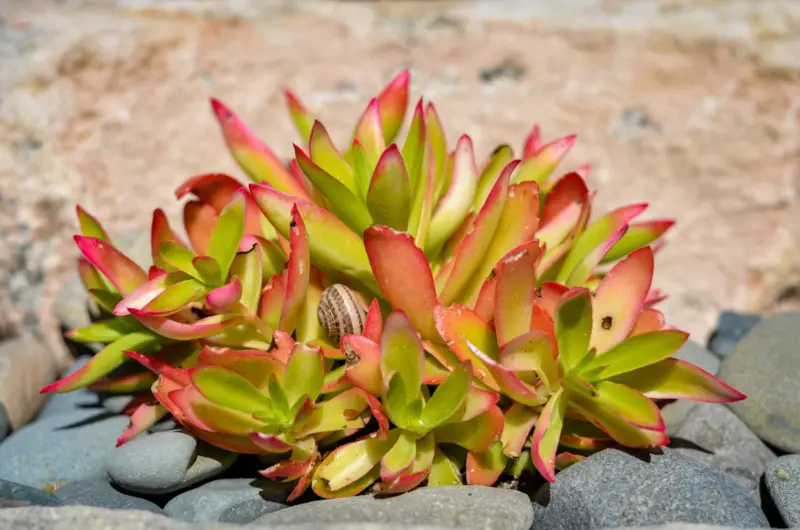
The ‘campfire’ is a succulent plant that has leaves that change from green to red as the plant matures. It will not require a lot of water to grow, and it tends to do best in partial to full sun.
26. Sedum reflexum (Blue Spruce)
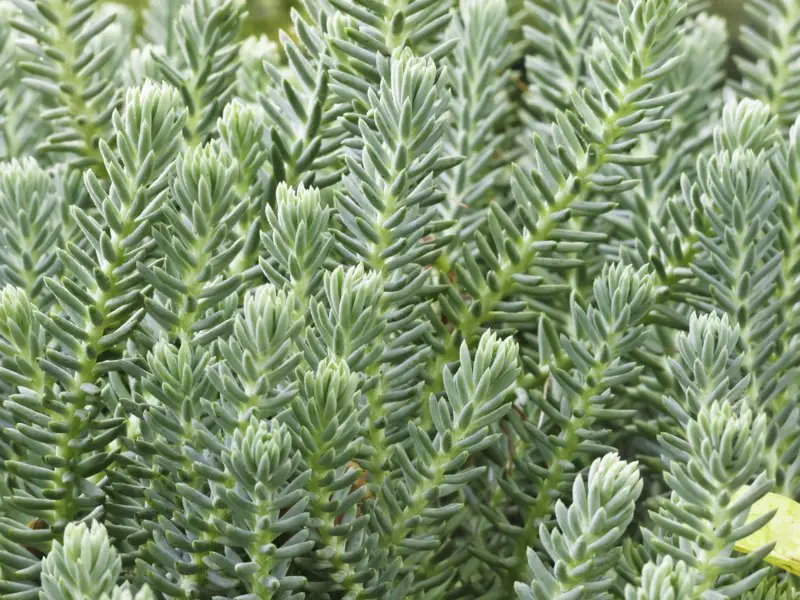
The reason that this plant is called blue spruce because it is a succulent that has blue leaves that look like pine needles. When it blooms, the flower will be star-shaped and yellow. It grows best in full sun and poorly fertilized soil.

